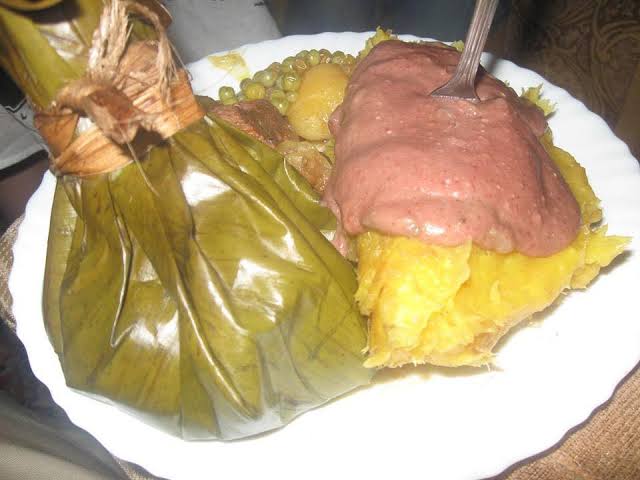

Uganda is indeed rich and this can be seen trough its richness in traditional Dishes.
Only in Uganda will you find places that can give you variety of fresh food as compared to other countries, they include yummy banana dishes, stews, pastes and juicy fruits and drinks.
Uganda’s culture weaves a yarn of variety not only through the manner of dress, language and other characteristics but also in its variety of dishes.
Nearly every tribe has a delicacy or specialty of Ugandan food.
Most of the highly ranked hotels and restaurants serve traditional dishes in form of buffets but often come within a short distance of really preparing authentic traditional dishes.
The best and most respectable way the Baganda cook it is by tying up the peeled fingers into a bundle of banana leaves, which is then put in a cooking pan with just enough water and then left to steam.
This style of cooking preserves all the flavours. When ready and tender, the matooke is squeezed into a soft and golden yellow mash. In Buganda, the food production process revolves around the banana plants.
Endowed with lakes and rivers, Ugandans have a chance to enjoy different varieties of fish as a supplement of Uganda food varieties.
Many tribes in Uganda eat their fish smoked or fresh (although certain Buganda clans do not eat some kinds of fish), while others wash it in a salt solution and dry it in the sun for days. Sun-dried fish is a delicacy in the eastern region.
There are also varieties of small fish which are highly nutritious (nkejje and mukene). They are sun-dried and cooked with Ground Nuts sauce or pre-soaked and fried. Their high flavor and nutritional value is highly prized.
In western Uganda among the Banyankole, Bakiga and Batooro and most of the north and east like Acholi Alur Langi , millet bread is the favored dish.
The milled flour is mixed with cassava and then mingled.
Ugandan food is quick to prepare. Up north, little or no cassava at all is added while in the western region a proportion of fifty-fifty or eighty-twenty (more cassava to the millet flour) is the ratio of mixture. The best relish to go with it would be smoked meat.
In the north, smoked beef is skillfully seasoned with a rich sauce of milled sim-sim (sesame) paste and dark green bitter vegetables.
In the eastern region, the people of Teso add a light sauce of tamarind fruit, which is plenty in those dry areas.
Some tribes in the east and northeast often use a variety of edible sorghum where the climate makes it impossible to afford the luxury of growing millet.
In western Uganda, equally tasty sauces are scraped out of cow butter and salt to make eshabwe, which is best served with millet.
Surprisingly the Bahima of western Uganda are not a particularly meat-eating tribe like the Karimojong of the northeast – who enjoy it by the chunk – although they keep cows in thousands.
Instead, they prefer a diet of milk, beans, Eshabwe, posh ,matooke and some millet bread. Meanwhile the Batooro of western Uganda peel the skins off beans and mash them into a thick paste (firinda) to which they add cow butter and salt to make a tasty relish that goes well with millet.


